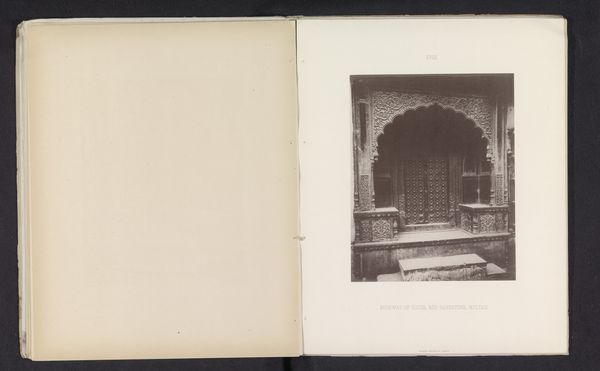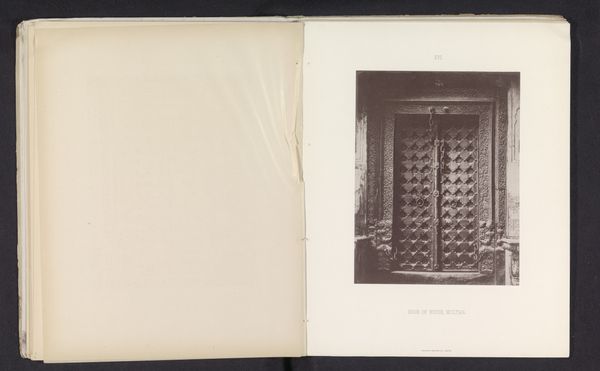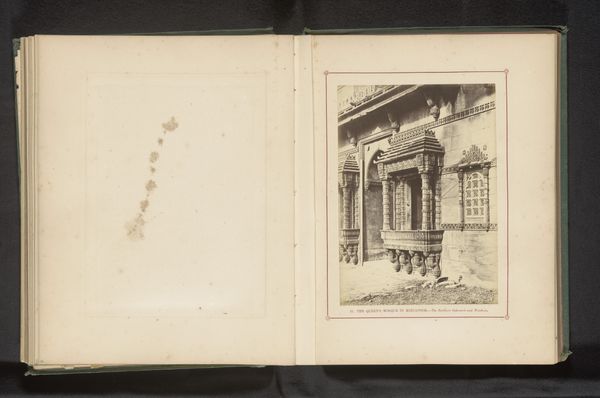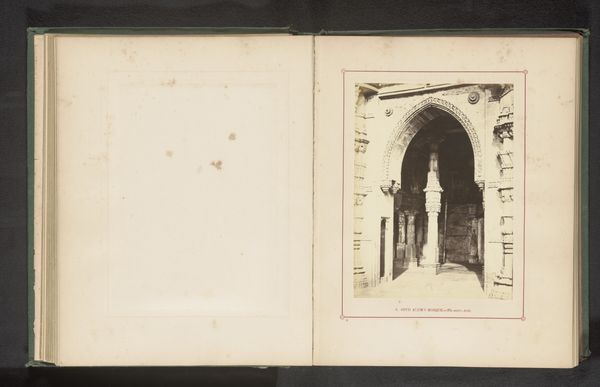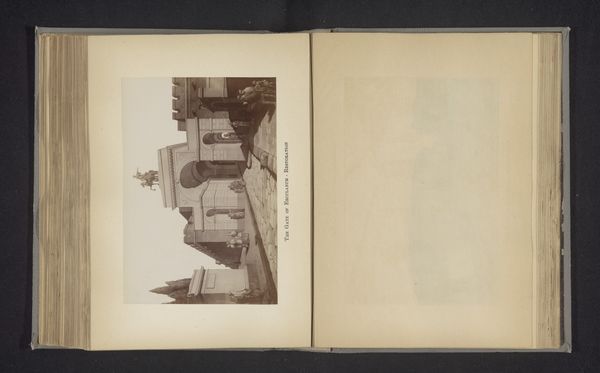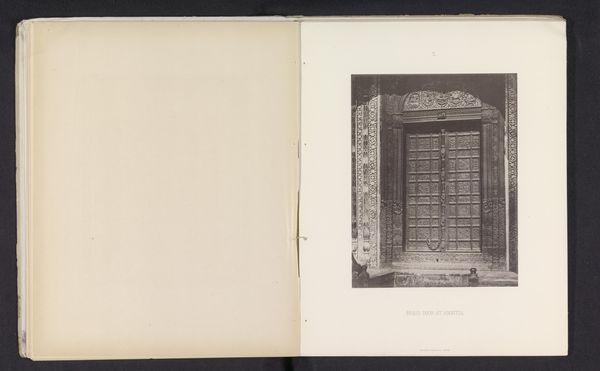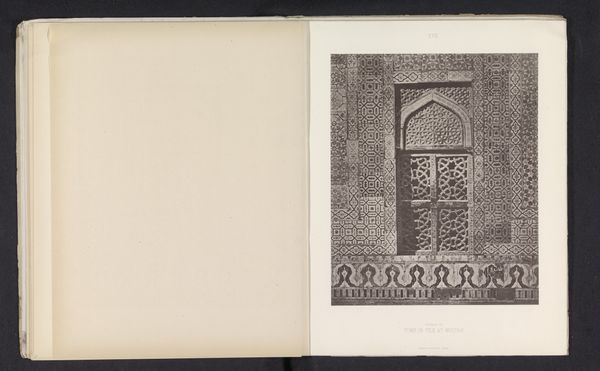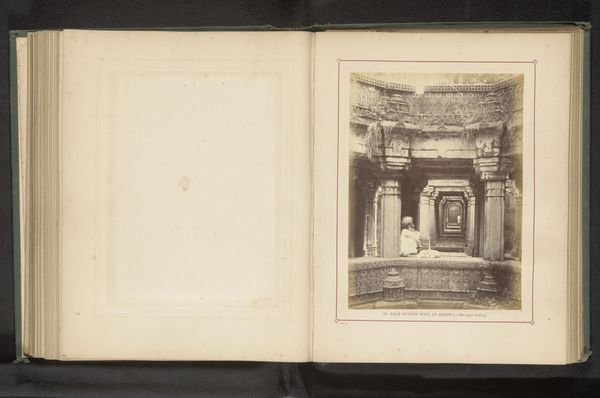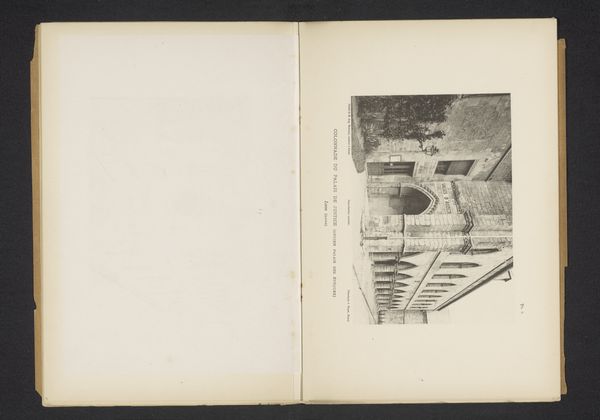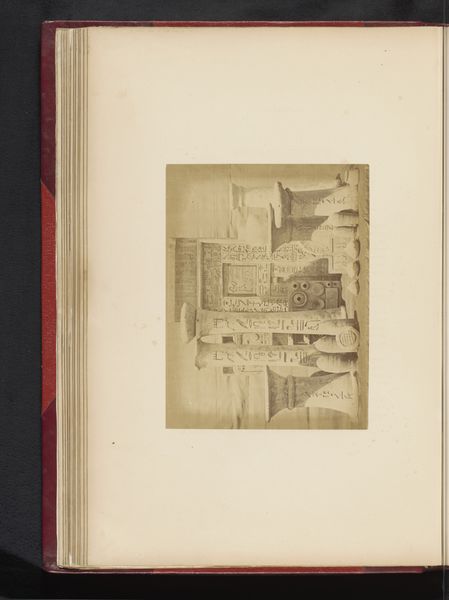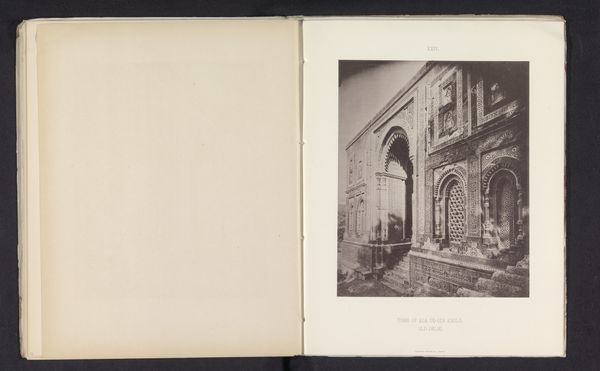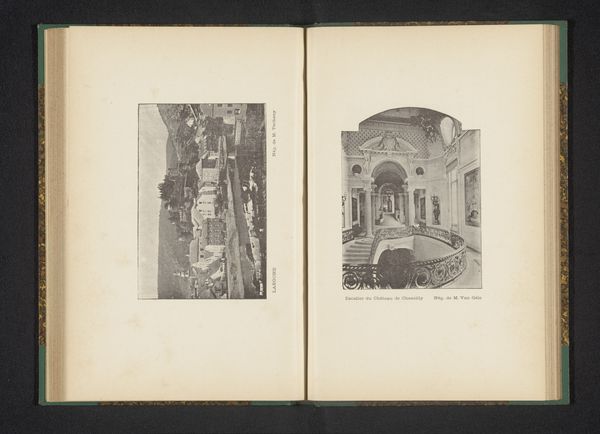
photography, albumen-print, architecture
#
aged paper
#
homemade paper
#
script typography
#
hand drawn type
#
landscape
#
photography
#
personal sketchbook
#
hand-drawn typeface
#
fading type
#
thick font
#
sketchbook drawing
#
islamic-art
#
sketchbook art
#
albumen-print
#
architecture
Dimensions: height 221 mm, width 175 mm
Copyright: Rijks Museum: Open Domain
This photograph shows the portico of a house in Multan, taken by an anonymous photographer. The intricate latticework and decorative carvings around the doorway are typical of the region's architectural style. The image provides a glimpse into the social and cultural life of 19th century Multan, now part of Pakistan, a city known for its Sufi shrines and rich history. The architectural details reflect the craftsmanship and aesthetic values of the time, while the house itself likely belonged to a wealthy family, given the elaborate ornamentation. British colonial rule had a significant impact on urban development and architectural styles in the region, and Multan was no exception, though this image reflects the preservation of older forms. To fully understand the photograph's significance, we need to consider the historical context, looking at the social hierarchies, economic conditions, and artistic traditions of the time. Researching historical records, architectural surveys, and travel accounts can shed light on the lives of the people who inhabited these spaces and the cultural exchanges that shaped the region. This helps us see the image not just as a pretty picture, but as a document of a specific time and place, revealing the complex social and institutional forces at play.
Comments
No comments
Be the first to comment and join the conversation on the ultimate creative platform.
